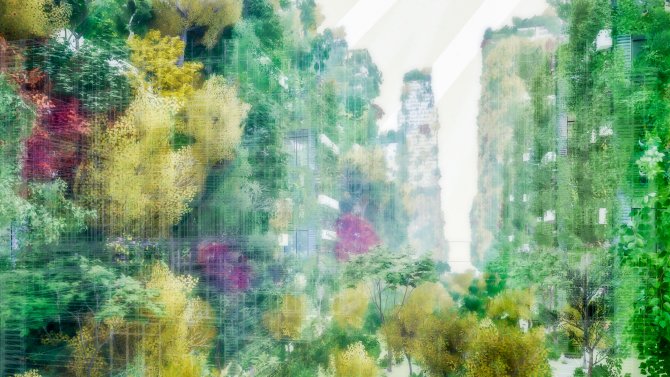Vedoucí
Odborní asistenti
Ateliér hostujícího profesora na FA. Winy Maas (MVRDV) se do Prahy přesunul se svým týmem z výzkumného think-tanku The Why Factory (TU Delft). Témata pro akademický rok byla NEXT PLANET a hledání alternativní vize rozvoje měst a planety a CZ2: Vize pro Českou republiku. Společného semestrálního projektu se zúčastnilo více než 130 studujících z FA ČVUT, ARCHIP, TU Delft, TU Liberec a VUT Brno.
Nizozemský architekt a urbanista Winy Maas působí od akademického roku 2022/23 jako hostující profesor na Fakultě architektury ČVUT. Do Prahy se přesunul i jeho tým z výzkumného think-tanku The Why Factory. Studenti budou pod jejich vedením hledat alternativní vize rozvoje měst a planety.
Winy Maas je spolu s Jacobem van Rijs a Nathalií de Vries zakladatelem studia MVRDV, architektonické kanceláře oceňované za inovativní a experimentální přístup k architektuře budov, měst i krajiny.
Winy Maas spojuje svoji praxi s výukou a výzkumem. Kromě práce pro MVRDV je profesorem na Technické univerzitě v Delftu, kde v roce 2008 založil The Why Factory, globální think-tank a výzkumný institut, který zkoumá možnosti rozvoje měst budoucnosti.
MVRDV a The Why Factory pravidelně vstupují do veřejné debaty o architektuře a urbanismu prostřednictvím výstav, publikací, diskusí, a tak to bude i v Praze. V zimním semestru se budou studenti věnovat globálním problémům. Výsledkem bude soubor návrhů od malých zásahů po vize v měřítku XXL, které představí ve formě 3D instalace NEXT PLANET, planety budoucnosti, na závěrečné výstavě v lednu.
Vybrané projekty The Why Factory

The Green Dip
The Green Dip refers to the architectural strategies used to incorporate plants into buildings. The research starts by asking several questions: why green? What are its capacities? How does green perform? How can green be implemented to our cities? Can we create a database of plant species? Can we create a software to help us do it? Can we invent a series of green elements to be implemented?
Green Dip digitally reimagines metropolises, like New York, and rethinks the typical set “green space”, merging it with the existing urban fabric and transforming concrete jungles into green ones.
The Green Dip is based on a software the Green Maker- that calculates, amongst other parameters, the amount of carbon dioxide that could be captured by green cities. The Green Maker combines the knowledge of buildings with the knowledge of plants. A set of 9 strategies can be chosen to dip any base typology in green. A catalogue of parametric elements allows for grasses, shrubs, and trees to be placed on any surface in on and around buildings. Knowledge of biomes ensures that only native plants can be used per site. Finally a database of 4500 plants including their water needs, total weight, maximum height, oxygen production and CO2 absorption are included.

Porocity
Our current cities are comprised of enclosed, distant and introverted architecture equally isolated from urban life and ecological context. How might we open these spaces? How might we introduce pockets of space capable of triggering social encounters, multiplying circulation and facilitating the introduction of flora and fauna?
The PoroCity research is a manifesto for the introduction of the public realm into the private sphere of our cities. Imagine a city full of pockets for encounters, streams of circulation and communication, zones for greenery and animals, tunnels of cooling and refreshment, channels and pockets of water and sanitation...
Let’s end with enclosure, claustrophobia, two-dimensionality, sameness, indoor transit or box architectures and imagine a future with more light, more views, more streets, more diversity, more publicness, more nature and more air… Porous is more!

SkyCity
The futuristic transportation tunnels of Elan Musk snaking beneath Los Angeles, like underground waterslides forming an high-speed public transportation system will very soon be reality. The first flying cars are being available on the commercial market. Commercial orbit flights are around the corner which creates the connection New York – London in under half an hour…
Sky City takes a look beyond those innovations, and envisions the technologies that will allow for a truly new mobility around our planet. Is it really the Monorail or Hyperloop which will fundamentally change the future of mobility? Or can we look at it in a different way? While these huge infrastructure projects take up enormous amount of land in our cities and hence the Earth’s habitable surface, it is time to think about the next step. What if we do not need any infrastructure? What if we can move up, down, left, right, rotate, revolve in any direction at any time? What if we could fly?




